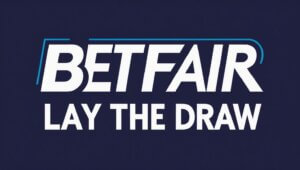
Lay the Draw Strategy in Football Betting Exchange
What is Lay the Draw?
Lay the Draw (LTD) is a popular football trading strategy used on betting exchanges like Betfair. The core idea is to lay the draw at the beginning of the match and trade out after a goal is scored. The assumption is that most football matches won’t end in a draw, and a goal will cause the draw odds to drift, allowing traders to secure a profit.
How Does It Work?
- You lay the draw before kickoff, say at odds of 3.50.
- If a goal is scored, the draw odds usually jump (e.g., to 5.00 or more).
- You then back the draw at the higher odds to lock in a profit using the cash-out function or manually balancing the positions.
- If the match ends in a draw, you lose the liability amount.
When to Use the Lay the Draw Strategy
- Teams with strong offensive play and weak defense.
- Games where a draw is unlikely due to team motivation or league standings.
- High goal expectation matches based on statistical models (over 2.5 goals).
- Preferably select matches where the Over 2.5 market shows a drop of more than 20% from the opening odds. Even better, target matches with a 40%+ drop and an OCI (Odds Comparison Indicator) from TxOdds ranging between 20 and 40.
- Try our Bancomat Strategy : read the article here
Risks and How to Minimize Them
If the game stays 0-0 or returns to a draw after a goal (e.g., 1-1), you may face losses. To mitigate risk:
- Exit the trade around the 60th minute if no goal has been scored.
- Consider partially cashing out after the first goal.
- Use proper bankroll management and limit liability per trade.
Lay the Draw Example
Match: Roma vs Napoli
Lay Draw at odds of 3.50 with €100 stake (liability: €250).
If a goal is scored and odds rise to 5.50, you back the draw with €63.64.
This locks in a profit of about €36.36 regardless of the outcome.
Lay the Draw is a strategic, popular method in football trading. With proper analysis, timing, and risk management, it can yield consistent profits. Always evaluate the match context and avoid overexposure to high-liability trades.
















